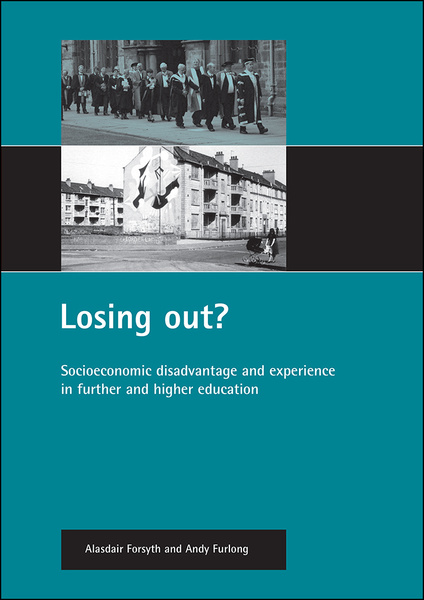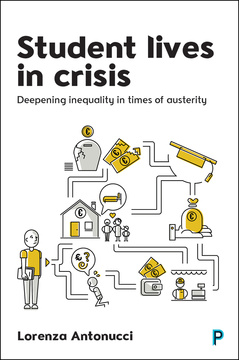Losing out?
Socioeconomic disadvantage and experience in further and higher education
By Alasdair Forsyth and Andy Furlong
Published
May 16, 2003Page count
76 pagesISBN
978-1861345080Dimensions
297 x 210 mmImprint
Policy PressBy tracking a group of qualified but socio-economically disadvantaged young people, this study identifies the factors which impact upon their HE careers. It examines factors that govern levels of success as well as those that impede the progress of academically able but disadvantaged young people.
The study uses both quantitative and qualitative methods to follow the progress of 395 young people from schools located in disadvantaged areas. It identifies factors that hinder their progress as well as the ways in which they overcome barriers.
While there has been much recent debate on the obstacles to widening HE participation, this is the first study to follow a group of disadvantaged students through HE.
Widening access to HE remains high on the political agenda with universities attempting to respond to the government's commitment to providing places for 50% of young people.
The report is aimed at academics and policy makers. It will be of particular interest to people within schools and universities who are attempting to implement a wider access agenda and wish to learn more about the nature of the barriers faced by disadvantaged students.
Alasdair Forsyth is a Research Associate and Andy Furlong is Professor of Sociology and Head of Department, both in the Department of Sociology and Anthropology. They were co-authors of an earlier publication on access to HE (Socio-economic disadvantage and access to Higher Education, Policy Press, 2000) and have worked extensively on youth transitions.
Socioeconomic disadvantage and experience in further and higher education: issues; Destinations of disadvantaged school leavers; Patterns of participation in further and higher education; Patterns of success in further and higher education; Barriers to full participation in higher education; Conclusions and policy implications.











